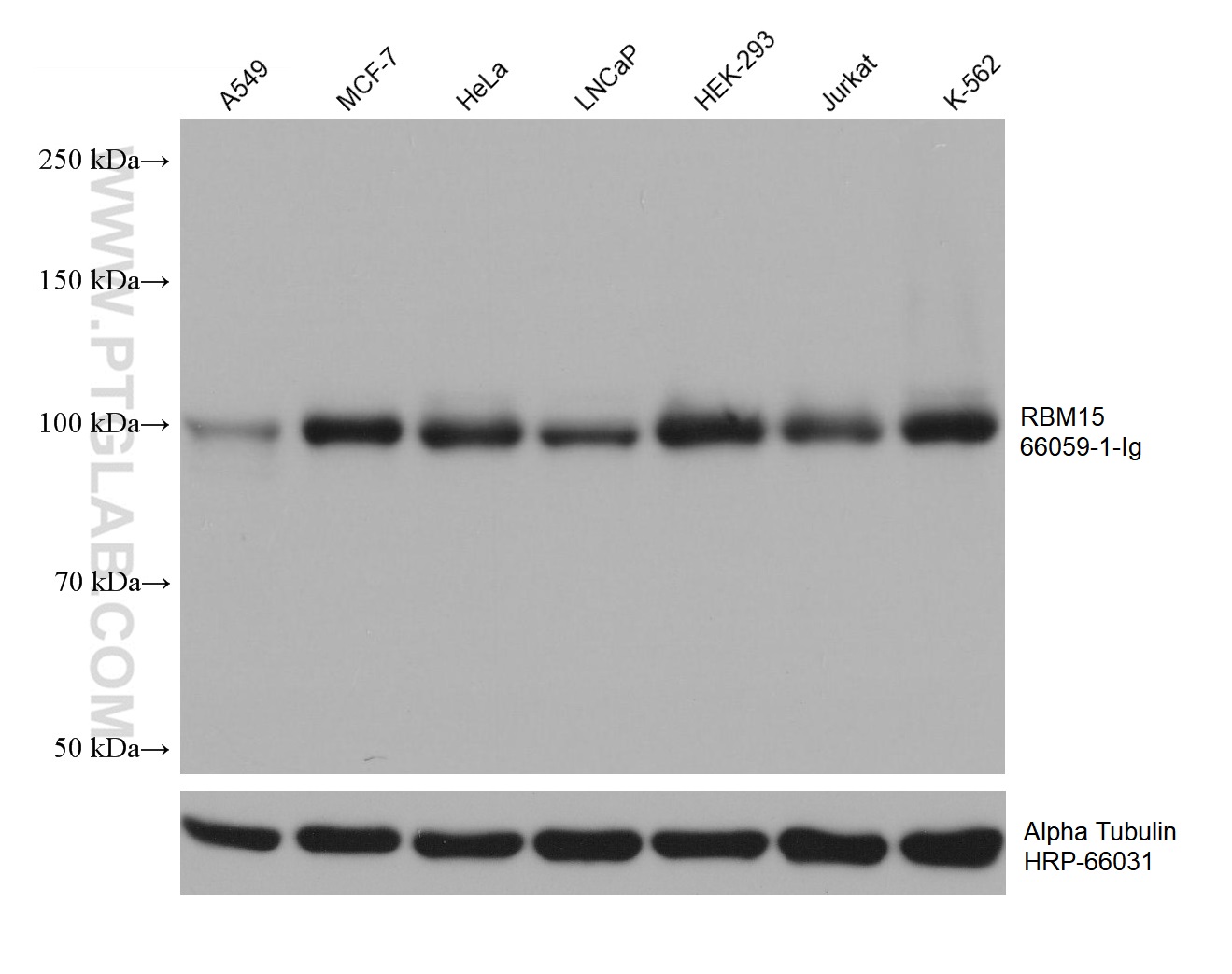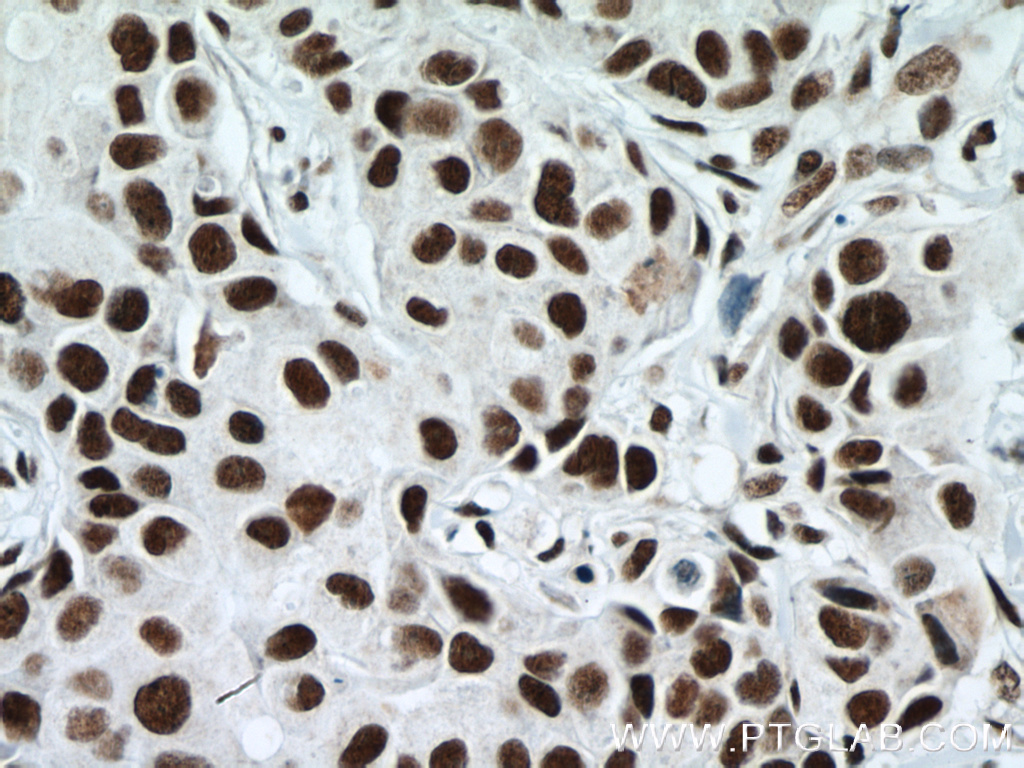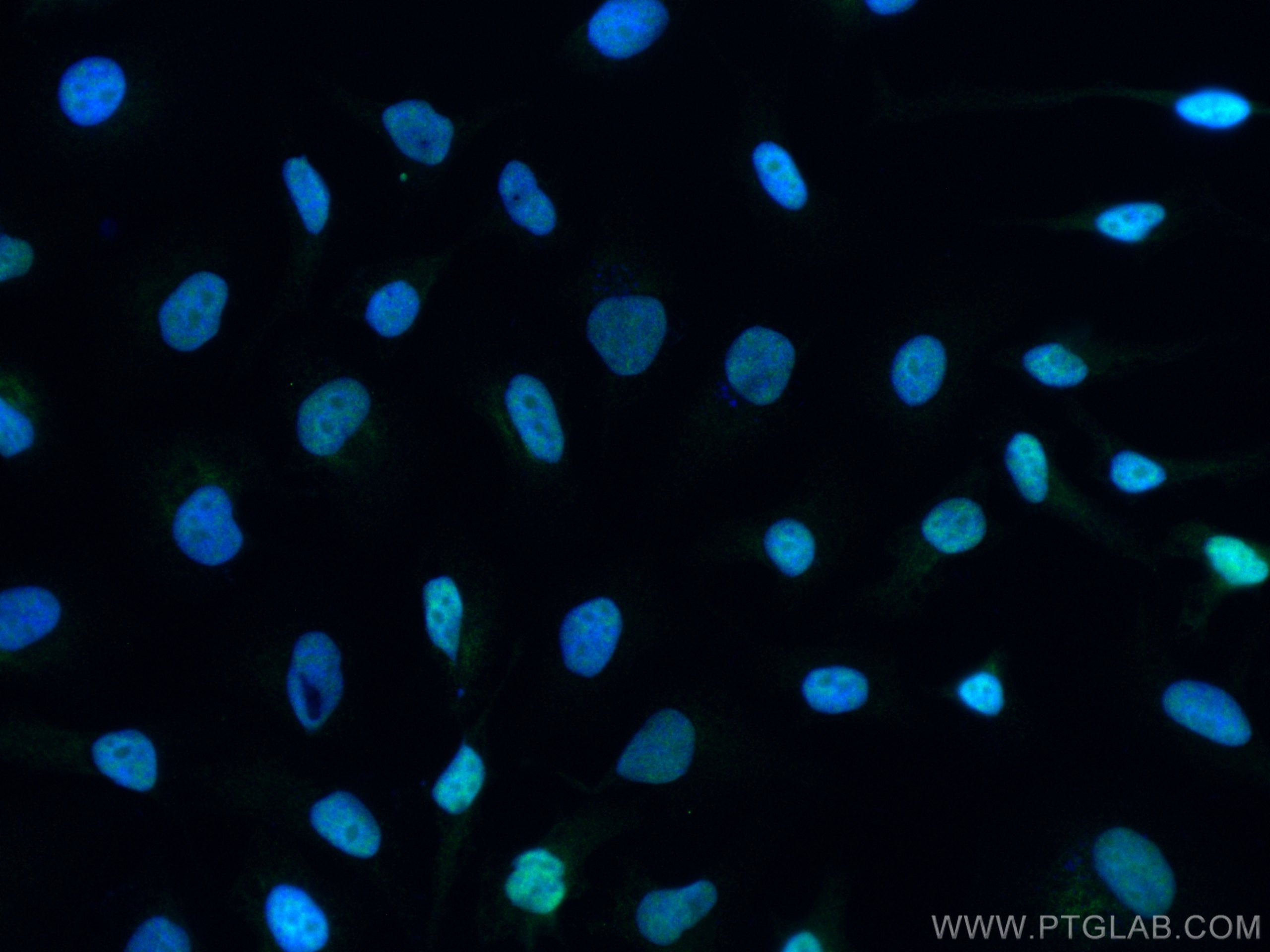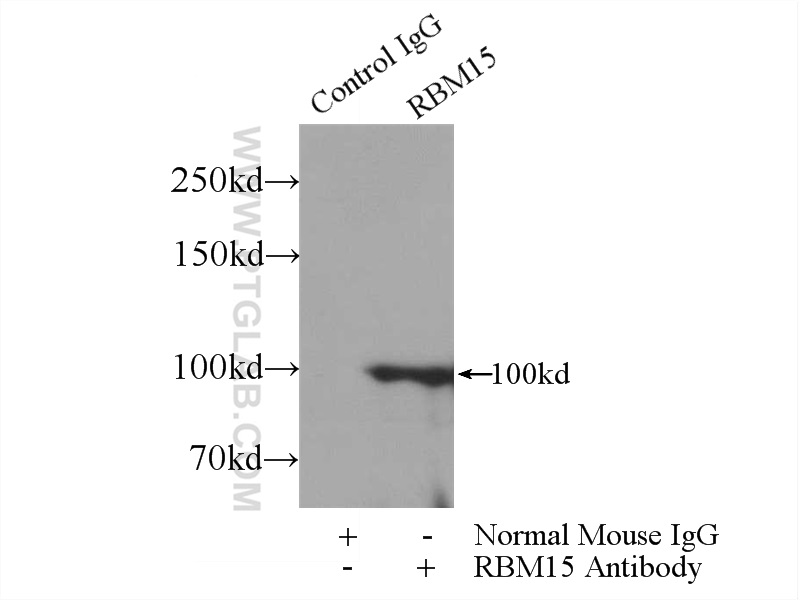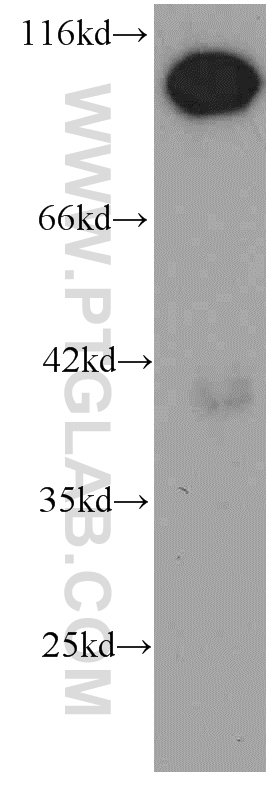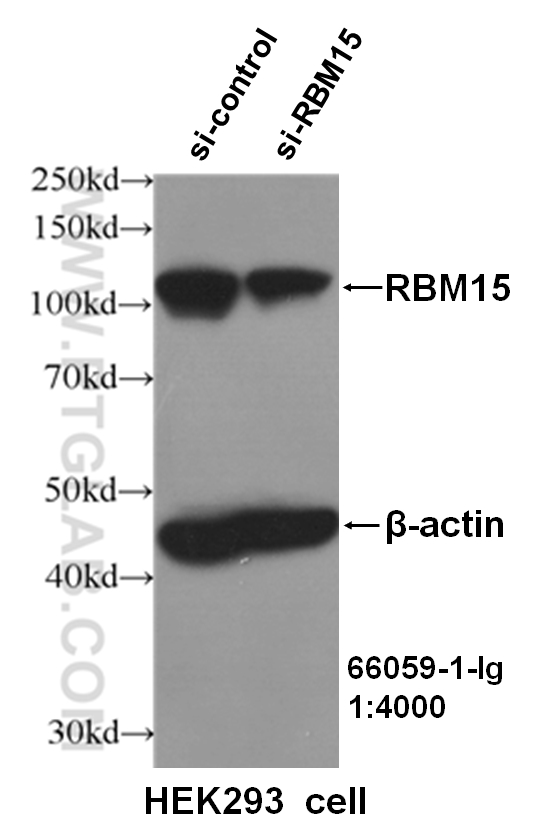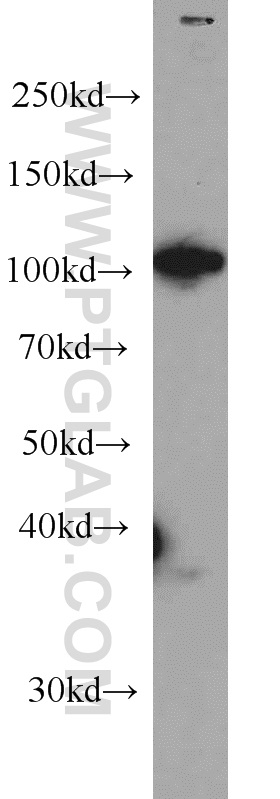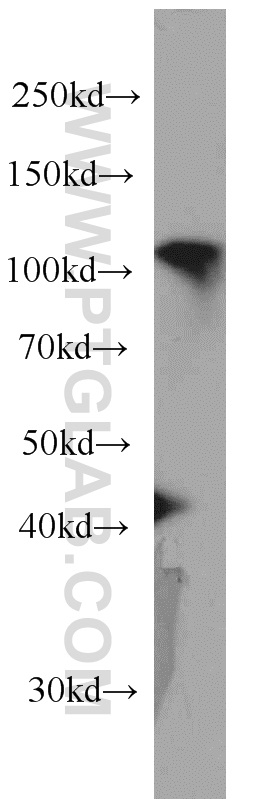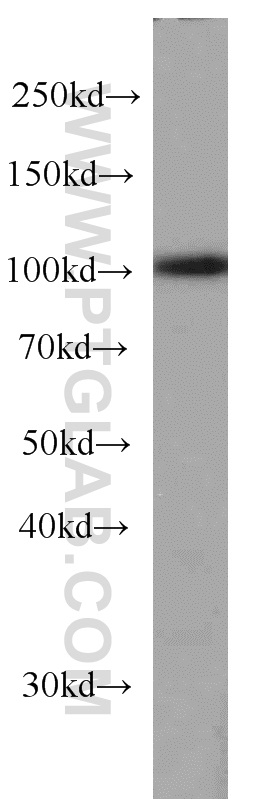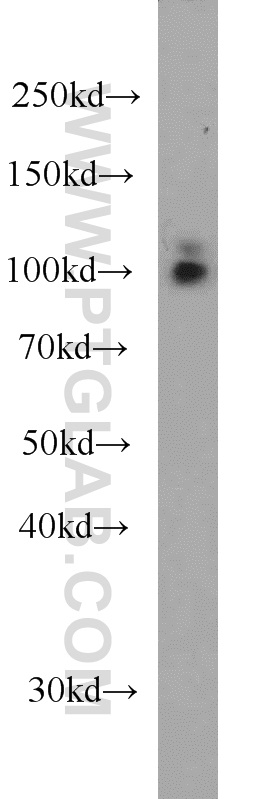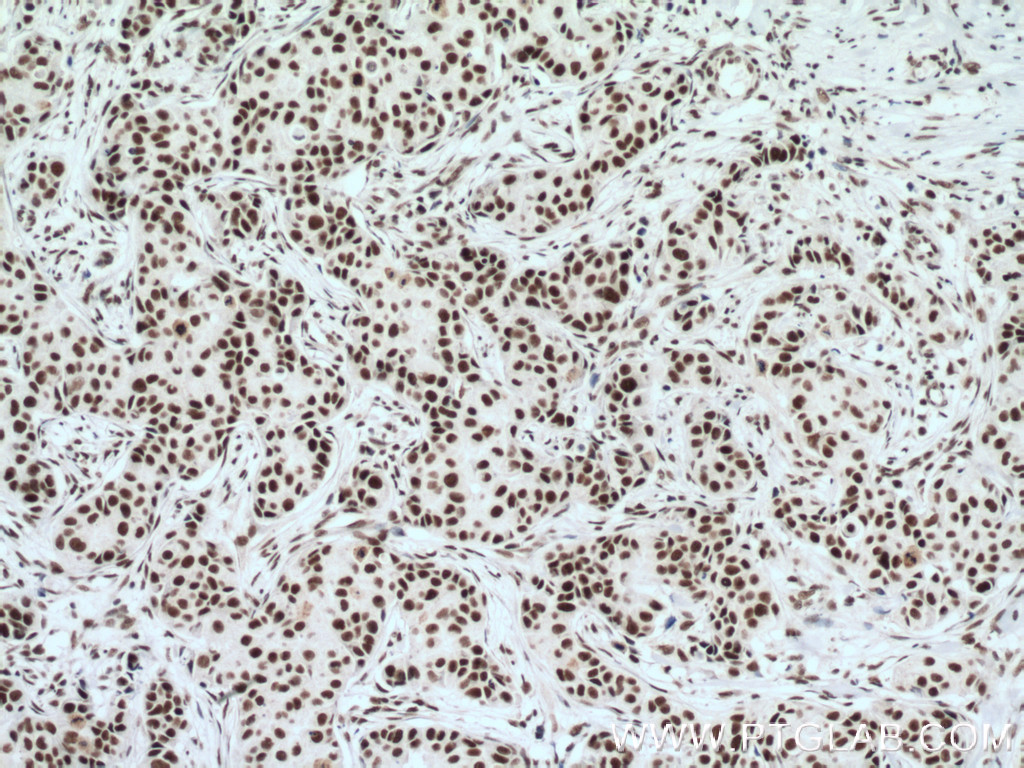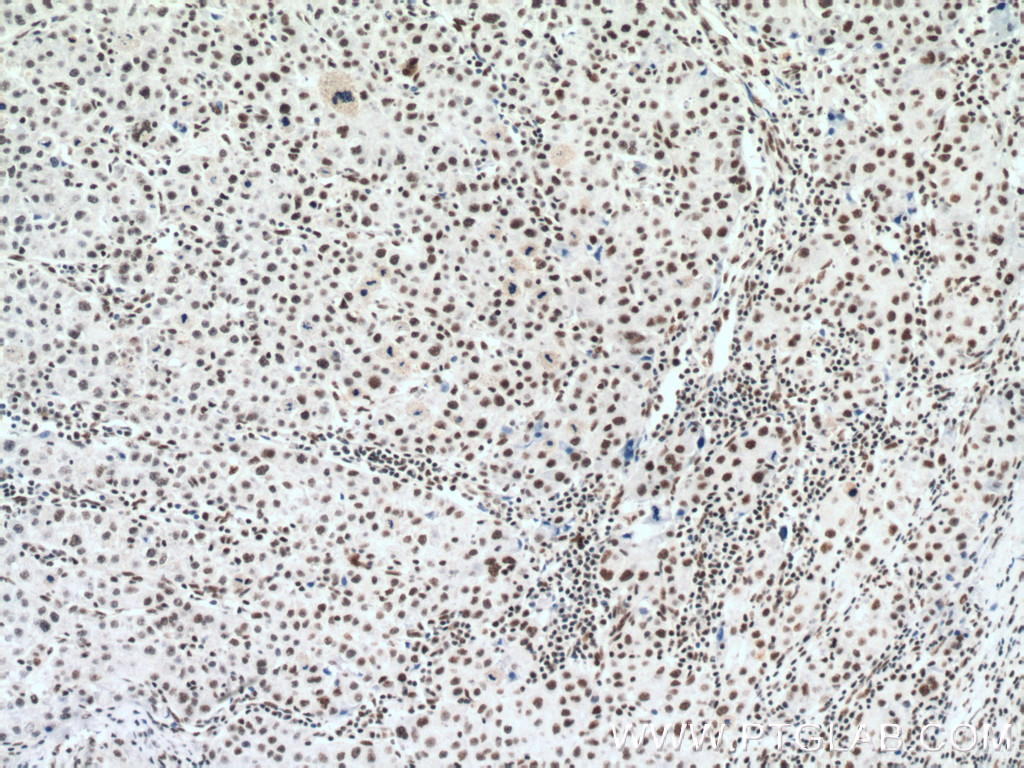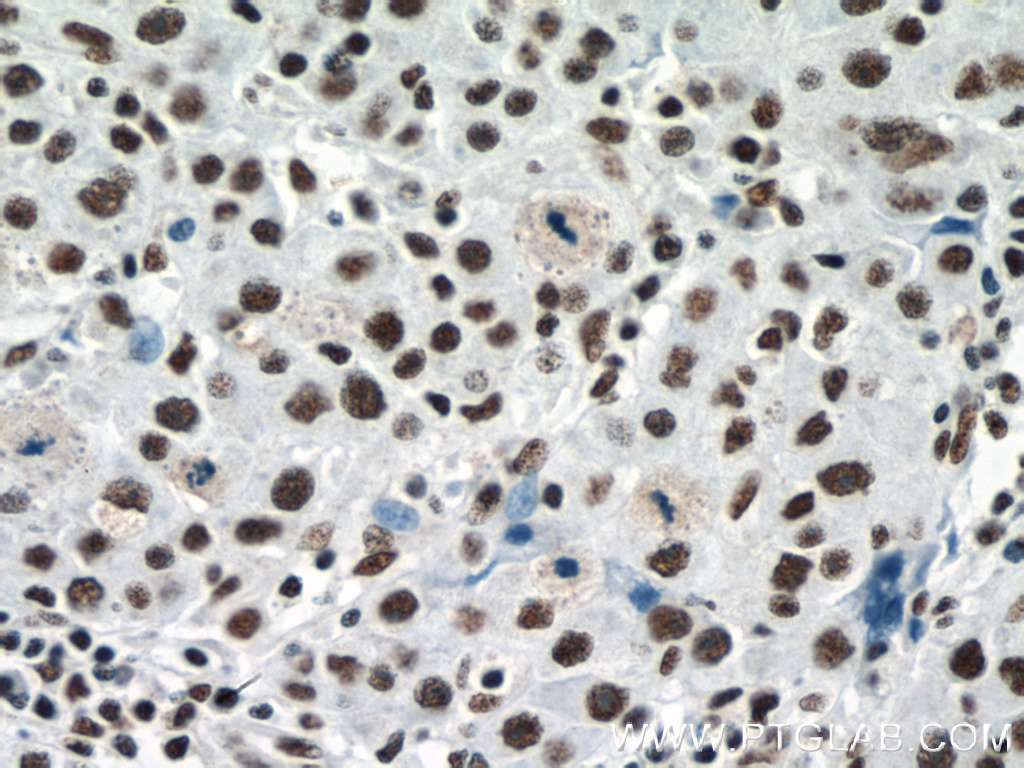验证数据展示
经过测试的应用
| Positive WB detected in | A549 cells, human brain tissue, HeLa cells, human heart tissue, HEK-293 cells, HEK293 cells, MCF-7 cells, LNCaP cells, Jurkat cells, K-562 cells |
| Positive IP detected in | HEK-293 cells |
| Positive IHC detected in | human breast cancer tissue, human liver cancer tissue Note: suggested antigen retrieval with TE buffer pH 9.0; (*) Alternatively, antigen retrieval may be performed with citrate buffer pH 6.0 |
| Positive IF/ICC detected in | HeLa cells |
推荐稀释比
| 应用 | 推荐稀释比 |
|---|---|
| Western Blot (WB) | WB : 1:5000-1:50000 |
| Immunoprecipitation (IP) | IP : 0.5-4.0 ug for 1.0-3.0 mg of total protein lysate |
| Immunohistochemistry (IHC) | IHC : 1:200-1:800 |
| Immunofluorescence (IF)/ICC | IF/ICC : 1:200-1:800 |
| It is recommended that this reagent should be titrated in each testing system to obtain optimal results. | |
| Sample-dependent, Check data in validation data gallery. | |
产品信息
66059-1-Ig targets RBM15 in WB, IHC, IF/ICC, IP, RIP, ELISA applications and shows reactivity with human samples.
| 经测试应用 | WB, IHC, IF/ICC, IP, ELISA Application Description |
| 文献引用应用 | WB, IHC, IF, IP, RIP |
| 经测试反应性 | human |
| 文献引用反应性 | human, mouse |
| 免疫原 | RBM15 fusion protein Ag17970 种属同源性预测 |
| 宿主/亚型 | Mouse / IgG2a |
| 抗体类别 | Monoclonal |
| 产品类型 | Antibody |
| 全称 | RNA binding motif protein 15 |
| 别名 | One twenty two protein 1, OTT, OTT1, RBM15, RNA binding motif protein 15, SPEN |
| 计算分子量 | 105 kDa |
| 观测分子量 | 107 kDa |
| GenBank蛋白编号 | BC006397 |
| 基因名称 | RBM15 |
| Gene ID (NCBI) | 64783 |
| RRID | AB_11042326 |
| 偶联类型 | Unconjugated |
| 形式 | Liquid |
| 纯化方式 | Protein A purification |
| UNIPROT ID | Q96T37 |
| 储存缓冲液 | PBS with 0.02% sodium azide and 50% glycerol , pH 7.3 |
| 储存条件 | Store at -20°C. Stable for one year after shipment. Aliquoting is unnecessary for -20oC storage. |
背景介绍
RNA-binding motif protein 15 (RBM15) belongs to the SPEN protein family, which have repressor function in several signaling pathway, and may bind to RNA through interaction with spliceosome components. It was first described as a 5′ translocation partner of the MAL gene in t(1,22)(p13;q13) infant acute megakaryocytic leukemia, and it functions in murine hematopoiesis through modulating Notch-induced transcriptional activation, which play crucial roles in leukemogenesis. Decreasing RBM15 levels with RNA interference could inhibit the growth and proliferation, block the cell cycle, and induce apoptosis in CML cells.
实验方案
| Product Specific Protocols | |
|---|---|
| WB protocol for RBM15 antibody 66059-1-Ig | Download protocol |
| IHC protocol for RBM15 antibody 66059-1-Ig | Download protocol |
| IF protocol for RBM15 antibody 66059-1-Ig | Download protocol |
| IP protocol for RBM15 antibody 66059-1-Ig | Download protocol |
| Standard Protocols | |
|---|---|
| Click here to view our Standard Protocols |
发表文章
| Species | Application | Title |
|---|---|---|
Nat Commun Oxidative stress-induced FABP5 S-glutathionylation protects against acute lung injury by suppressing inflammation in macrophages. | ||
Elife Cross-talk between PRMT1-mediated methylation and ubiquitylation on RBM15 controls RNA splicing. | ||
EMBO Rep The AS-RBM15 lncRNA enhances RBM15 protein translation during megakaryocyte differentiation. | ||
J Gene Med The pathological tissue expression pattern and clinical significance of m6A-regulatory genes in non-small cell lung cancer. | ||
Exp Mol Med The m6A writer RBM15 drives the growth of triple-negative breast cancer cells through the stimulation of serine and glycine metabolism
| ||
Oncogene RBM15 facilitates osimertinib resistance of lung adenocarcinoma through m6A-dependent epigenetic silencing of SPOCK1 |
